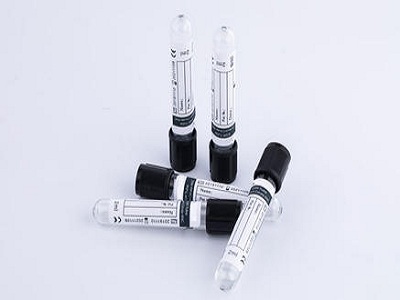Classification and description of blood collection tubes
1. Common serum tube with red cap, blood collection tube without additives, used for routine serum biochemistry, blood bank and serology related tests.
2. The orange-red head cover of the rapid serum tube has a coagulant in the blood collection tube to accelerate the coagulation process. The rapid serum tube can coagulate the collected blood within 5 minutes, and is suitable for emergency serum serial tests.
3. The golden cap of the inert separation gel accelerator tube, and the inert separation gel and coagulant are added to the blood collection tube. After the sample is centrifuged, the inert separation gel can completely separate the liquid components (serum or plasma) and solid components (red blood cells, white blood cells, platelets, fibrin, etc.) in the blood and completely accumulate in the center of the test tube to form a barrier. keep it steady. Procoagulants can quickly activate the coagulation mechanism and accelerate the coagulation process, and are suitable for emergency serum biochemical tests.
4. The heparin anticoagulation tube has a green cap, and heparin is added to the blood collection tube. Heparin directly has the effect of antithrombin, which can prolong the coagulation time of the specimen. It is suitable for red blood cell fragility test, blood gas analysis, hematocrit test, erythrocyte sedimentation rate and general energy biochemical determination, but not suitable for blood coagulation test. Excessive heparin can cause aggregation of white blood cells and cannot be used for white blood cell counts. It is also not suitable for leukocyte classification because it can make the blood film stained with a light blue background.

5. The light green head cover of the plasma separation tube, adding heparin lithium anticoagulant to the inert separation rubber tube, can achieve the purpose of rapid separation of plasma, which is the best choice for electrolyte detection, and can also be used for routine plasma biochemical measurement and emergency plasma such as ICU Biochemical testing. Plasma samples can be loaded directly on the machine and are stable for 48 hours under refrigeration.
6. EDTA anticoagulation tube purple cap, ethylenediaminetetraacetic acid (EDTA, molecular weight 292) and its salts are an amino polycarboxylic acid, which can effectively chelate calcium ions in blood samples, chelate calcium or react calcium. Site removal will block and terminate the endogenous or exogenous coagulation process, thereby preventing the blood sample from coagulating. It is suitable for general hematological tests, not suitable for coagulation test and platelet function test, nor for the determination of calcium ion, potassium ion, sodium ion, iron ion, alkaline phosphatase, creatine kinase and leucine aminopeptidase and PCR test.
7. The sodium citrate coagulation test tube has a light blue cap. Sodium citrate plays an anticoagulant effect mainly by chelating calcium ions in the blood sample. Applicable to coagulation experiments, the anticoagulant concentration recommended by the Standardization Committee of the National Provisional Laboratory is 3.2% or 3.8% (equivalent to 0.109mol/L or 0.129mol/L), and the ratio of anticoagulant to blood is 1:9.
8. Sodium citrate erythrocyte sedimentation rate test tube Black cap, the sodium citrate concentration required for the erythrocyte sedimentation rate test is 3.2% (equivalent to 0.109mol/L), and the ratio of anticoagulant to blood is 1:4.
9. Potassium oxalate/sodium fluoride gray cap, sodium fluoride is a weak anticoagulant, usually combined with potassium oxalate or sodium iodate, the ratio is 1 part of sodium fluoride, 3 parts of potassium oxalate . 4mg of this mixture can make 1ml of blood not coagulate and inhibit glycolysis within 23 days. It is a good preservative for blood glucose determination, and cannot be used for the determination of urea by urease method, nor for the determination of alkaline phosphatase and amylase. Recommended for blood sugar testing.
Post time: Mar-07-2022





